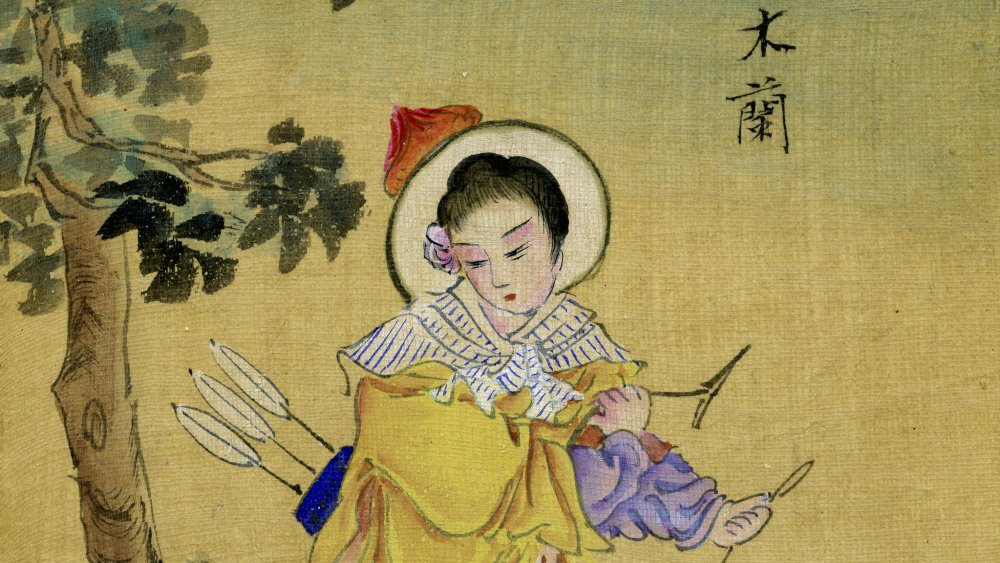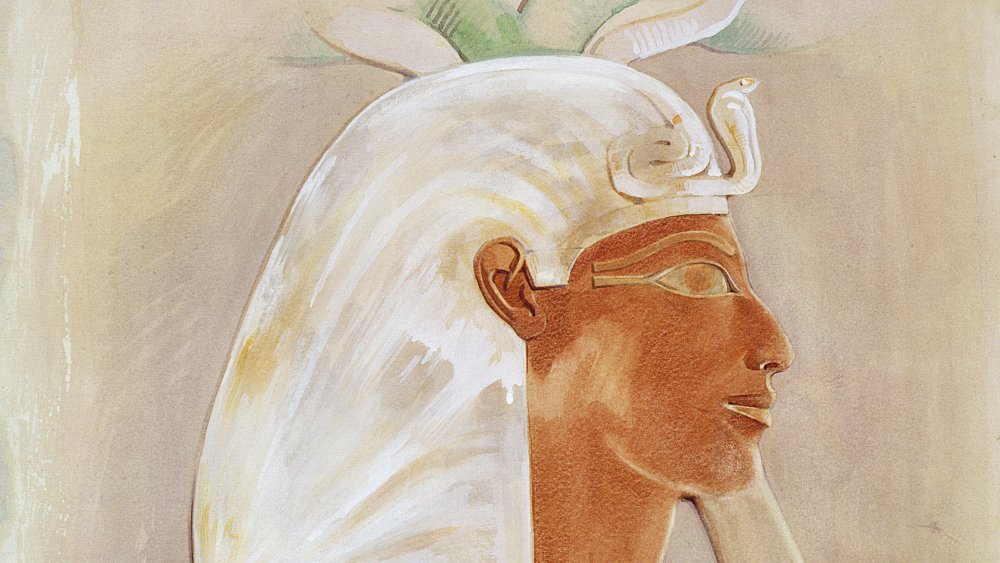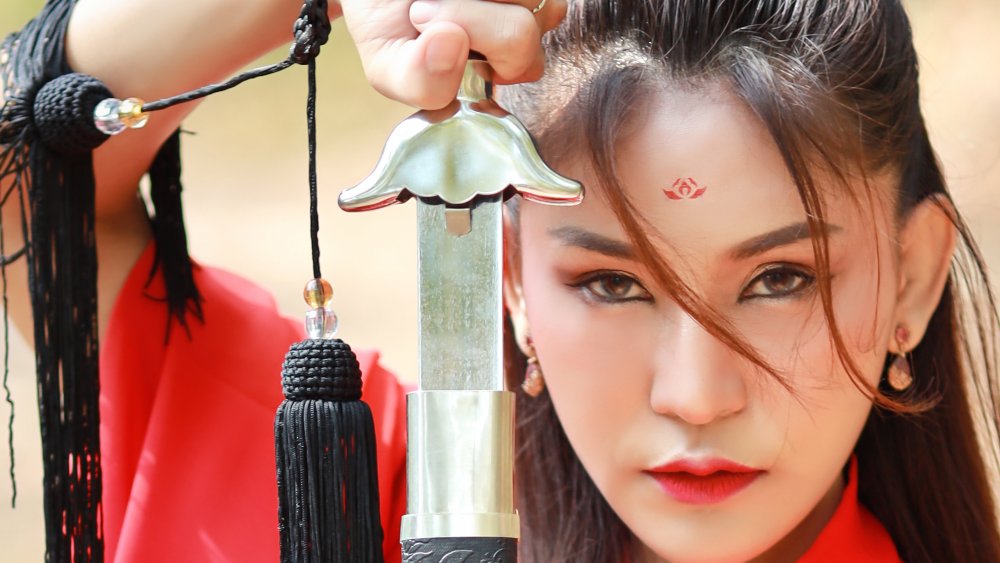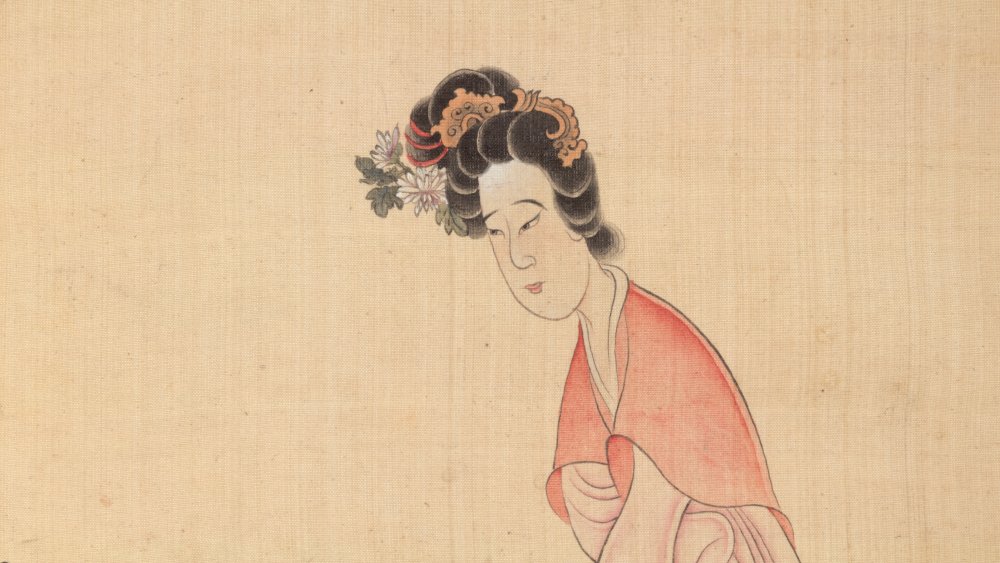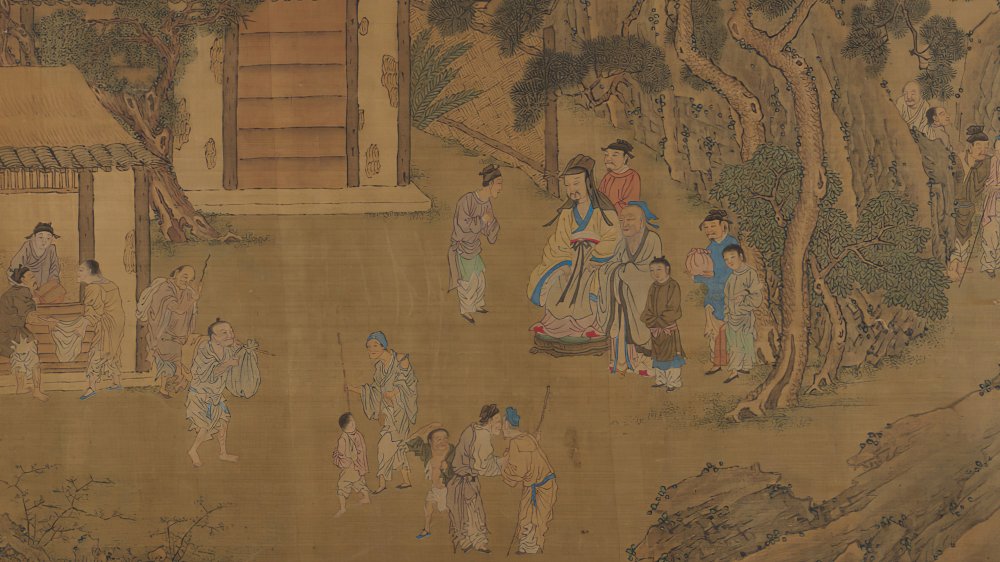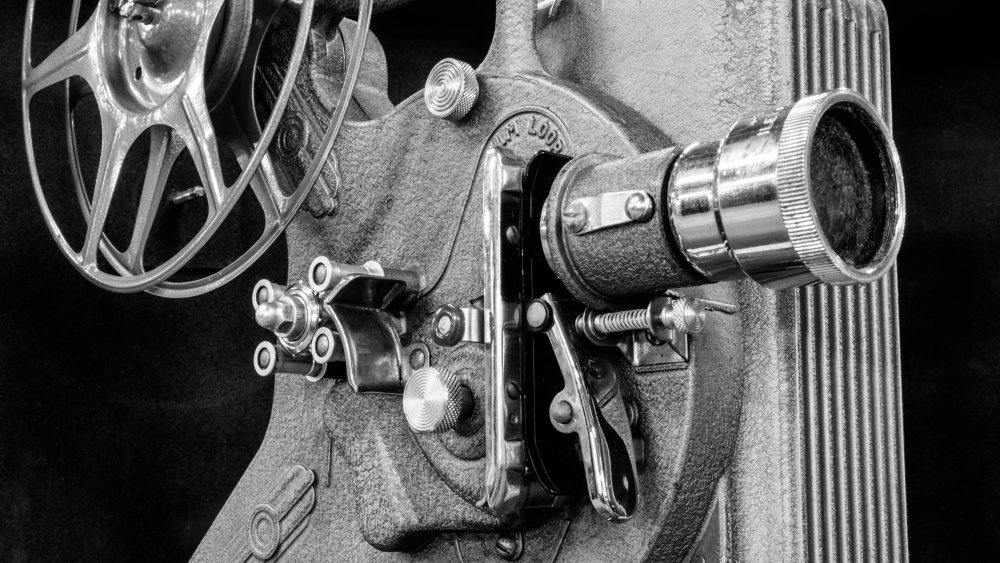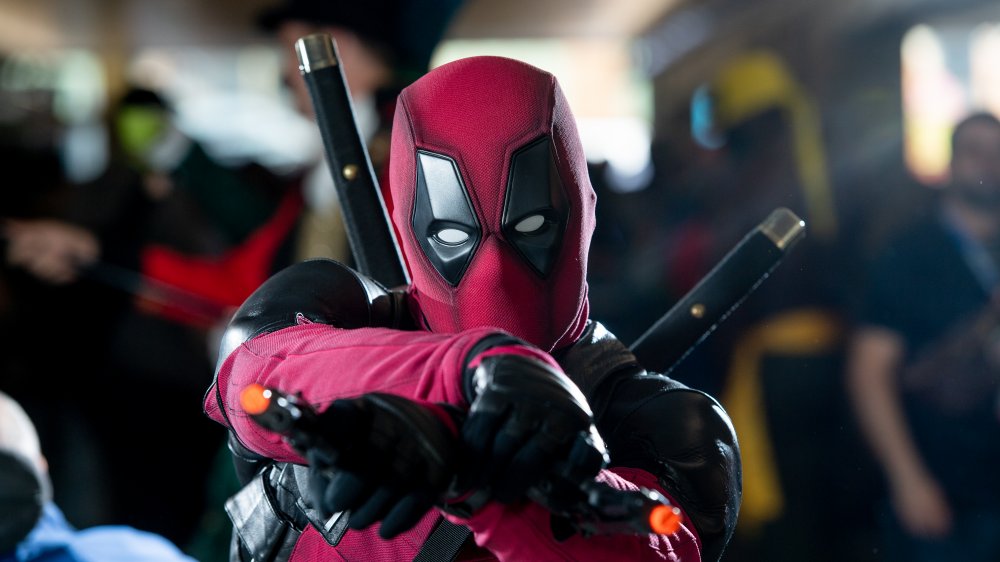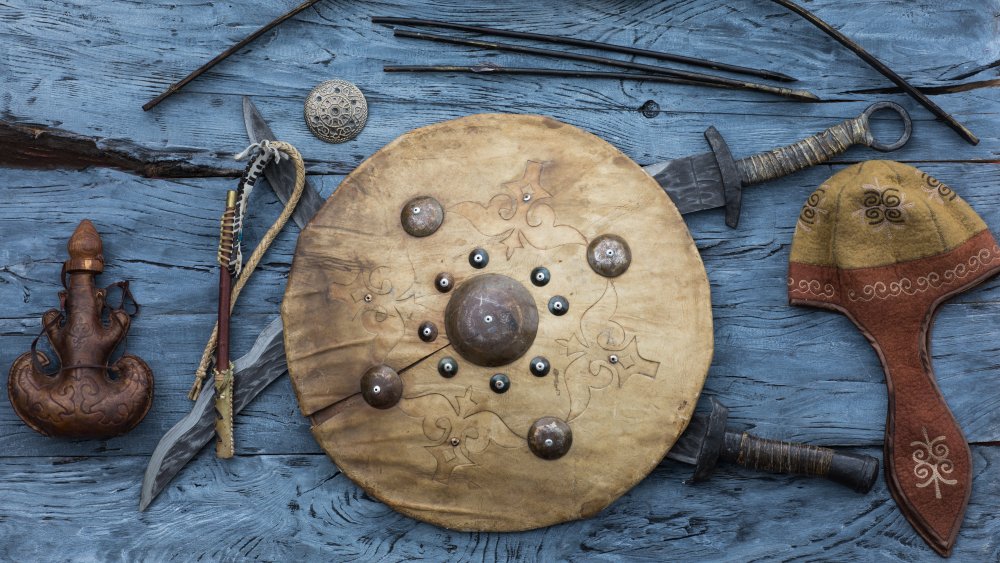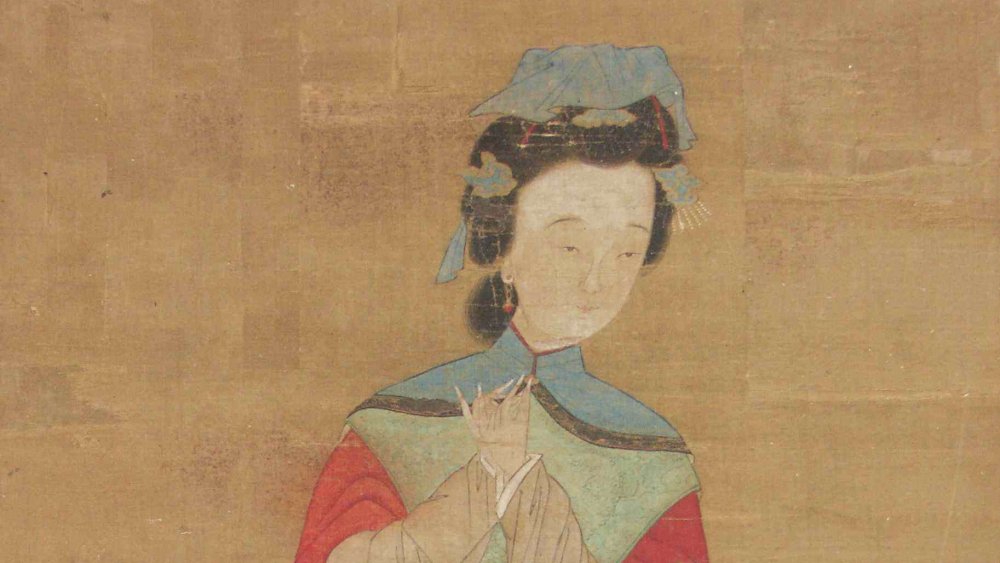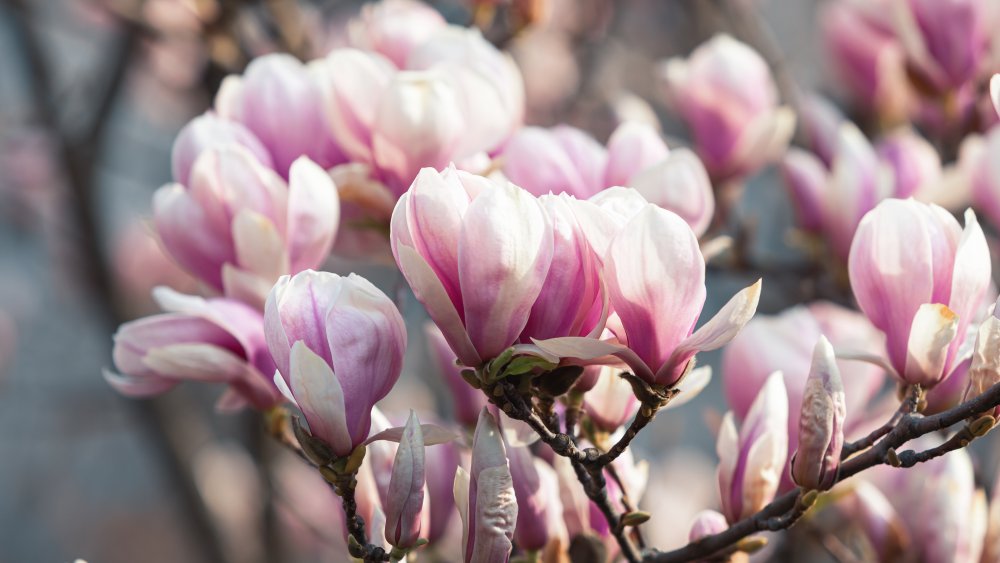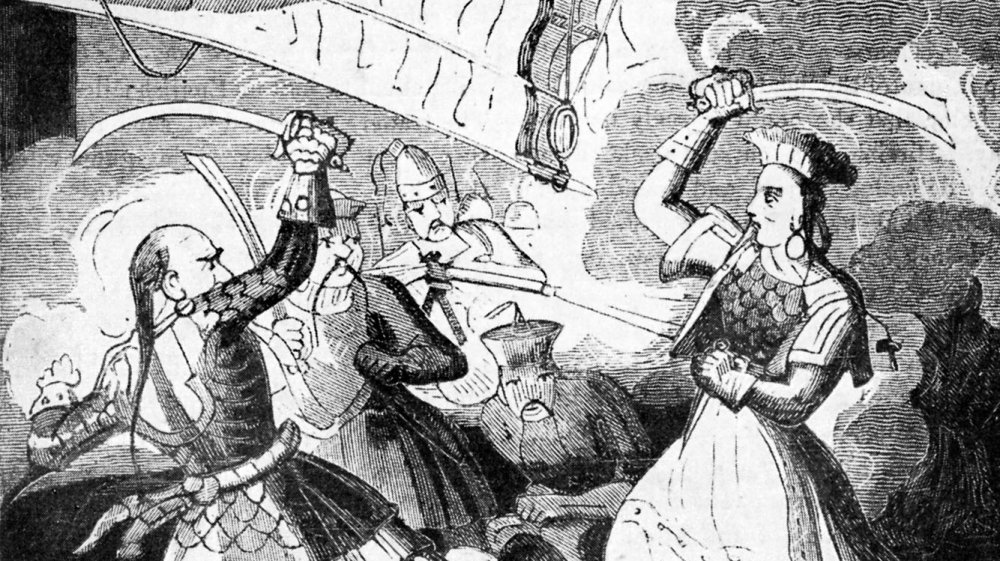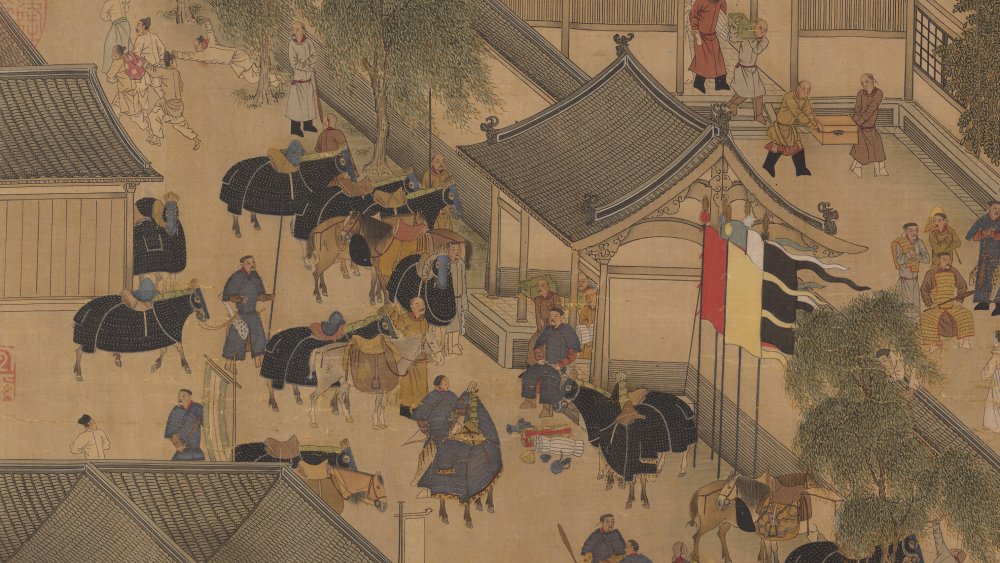Fascinating Facts About The Legend Of Mulan
Was Mulan a real person? Did she really fight in the army disguised as a man? Who did she fight — and what happened to her after the battle was done?
The release of Disney's politically controversial live-action Mulan movie has renewed public interest in this beloved classic. However, Western audiences may not be aware that the story of Mulan is not just a children's tale but rather a deep and ancient part of Chinese cultural tradition — a tradition dating back literally thousands of years. An incredible wealth of material has been written about Mulan in both academic and entertainment circles. Though the Ballad of Mulan began as a humble folktale, it has endured — to the extent that there have been books written, movies made, and statues erected. With every "reboot," the story is retold and reframed to modern cultural sensibilities.
But the core of the story has remained remarkably unchanged. With all that in mind, here are some of the most fascinating facts about the larger-than-life myth of Mulan.
Hua Mulan could be a historical tale — but it probably isn't
Let's tackle the most interesting (and controversial) fact first. You may have heard that Hua Mulan was a historical figure. Well, whether that's true or not comes down to what we consider "historical." We know that Hua Mulan is a character within a folktale, the earliest recorded copy of which is the Ballad of Mulan. While the oldest written copies of the story date between 420 and 589 CE, it's likely that the tale itself is far older than that — having been spread through oral tradition.
Whether Hua Mulan was truly a historical figure wasn't even questioned until the modern era, according to Mulanbook. During the Ming Dynasty, Mulan's story was recorded by historians in the works Woman Generals, Biographies of Woman Warriors, and Illustrated Accounts of Famous Women Throughout the Ages. Despite this, most modern historians think it's very unlikely that there was ever a nonfictional "Hua Mulan." It comes down to evidence. There aren't any historical figures that match her description.
But when it comes to a story that's 2,000 years old, it also becomes a question of what history really is. Histories can be lost, forgotten, or just erased. We now know, for instance, that Egypt's female pharoah, Hatshepsut (pictured above), was intentionally and systematically erased from history. So while Mulan can't be proven to be historical, there's still a chance.
In the original tale, Hua Mulan traveled for 12 Years
Did you think that Mulan gained esteem pretty fast in the movies? You aren't wrong. Per Mulanbook, in the original tale, Mulan traveled for 12 years among her comrades, with them none the wiser.
In popular retellings of the Hua Mulan story, she spends a few seasons traveling and proving herself. That's not very long to hide someone's gender — and it's definitely not long enough to transform from a young girl into a full-fledged soldier. But in the ballad, it's a far more impressive feat, spanning over a decade of time. So, why the change?
It could be down to format. Though Hua Mulan started as a simple ballad, it was eventually popularized as a series of books and plays. These works of fiction may have needed to make her story briefer to be palatable to audiences. (No one wants to sit through 12 years of trudging through rivers, mountains, and snow.) By the end of the ballad, Hua Mulan has proven herself to the emperor through her acts of militaristic strategy. These acts aren't just the random acts of a young soldier but an exemplary career of service.
And this changes the entire thrust of the story: Hua Mulan isn't just someone who decided to masquerade as a man for a few major battles. Instead, it was a significant portion of her young adult life.
Hua Mulan didn't reveal herself until the end
Unlike in the film, there's no dramatic unmasking to be had in the ballad. In the popular animated film, Hua Mulan is revealed to be female after being wounded in battle. She's summarily dismissed but still draws up her courage and races to save the emperor from the approaching horde. In the last act, she proves herself as a fighter and as a woman. It's a nice story, but it's not in the original.
In the ballad, there's no such urgent conflict. Hua Mulan successfully lives and fights as a man for the entirety of her career. After the war has been won, she meets with the emperor and is offered a promotion in exchange for her service. She asks only for a swift mount to get back to her family. She then goes home and gets dressed as a woman. It is only then that her comrades-in-arms see that she's not a man.
What happens later varies by the tale. In most stories, she simply resumes her life. But later adaptations tended toward dramatization. In one popular rendition, her father is dead by the time she returns home, her mother has remarried, and she herself is ordered to become a concubine.
Speaking of Mulan's family...
Hua Mulan had a pretty large family
In Disney's animated Mulan, Mulan has both her parents and a grandmother. That's already batting pretty good for a Disney film. (Did you know that as of 2015, 56 out of Disney's 104 animated films featured a dead, missing, or single parent?) But it's unusual in a different way: Historically, most families had quite a few children. While many people are used to thinking of Chinese families as small, the one-child policy wasn't introduced until the 1970s.
According to scholar Julie Anne Lohr, in the ballad, Hua Mulan had a father, mother, eldest sister, and younger brother. It's implied, though not always outright stated, that her younger brother is so young that he couldn't possibly fight in the war. In some stories, she also has a younger sister, who dresses as a man to deliver a letter to her fiancé.
Why does this matter? Well, in Disney's adaptation, there's literally no one else who could go in her stead. She has to go. In other versions of the story, an older or younger sister could do it, as well. It's her choice to be the one to go to war.
It's a minor change, but it's one that changes the general thrust of the story. Small details can amount to a big change in the way the story is being told and what it means to its audience.
The first onscreen adaptation of Hua Mulan was in 1927
During the 1920s, directors raced to be the first to capture the tale of Hua Mulan in the popular silent movie format. It was first released in 1927 as Hua Mulan Cong Jun (Hua Mulan Joins the Army) — a two-week-long production rushed to beat out another adaptation, which had already been in development for two years at that time, according to author Kristine Harris. That second adaptation was released in 1928 as Mulan Joins the Army.
This was followed a decade later by the 1939 film Maiden in Armor, which may very well be the origin of some of the major story beats in the later Disney film. By the 1939 film, the idea that Mulan would end up marrying another commander or general had been firmly solidified, even if the story wasn't firmly realized as a "romance."
In the 1939 retelling, Liu Yuandu is introduced as a potential romantic interest – though he is confused by his feelings because he is convinced that Mulan is a man. It's notable that the original ballad has no such love interest, though many plays and books introduced one. The original ballad ends with Mulan returning to her home single.
In 1964, the story would be brought to film again as Lady General Hua Mu Lan, starring Ivy Ling Po. Still, it wasn't until Disney's 1998 retelling of the classic tale that it really erupted into public consciousness.
Hua Mulan shows up three times in Disney franchises
If you're still doubting just how ubiquitous the myth of Hua Mulan is, consider this: Hua Mulan shows up not once, not twice, but three times in franchises owned by Disney. Obviously, there are the animated and live-action films, but the third time is probably not something that you'd ever guess: Hua Mulan is a Marvel character.
In the Deadpool: Killustrated series, Dreadpool (an alternate-reality version of Deadpool) is on an interdimensional killing spree, as one does. Hua Mulan shows up in Issue #2, working with Sherlock Holmes and Dr. Watson to defeat him. She later cuts off Dreadpool's hand, with Dreadpool remarking, "I thought you were the hottest dude I have ever seen... but... Look at what you did!"
Deadpool: Killustrated is an extremely tongue-in-cheek comic series. Dreadpool, you see, is trying to free characters from the control of their creators, the only way he knows how: murder. He's stopped by Mulan only after he's killed most of the modern Marvel lineup, including the Avengers and the X-Men.
But what's really interesting about this? Dreadpool's goal is to kill off the most inspirational characters in all of literature — thereby killing any characters inspired by them, too. Mulan is seen in such high regard that she is connected to Sherlock, Beowulf, and Natty Bumppo.
The war Hua Mulan fought in was a real, historical war
Though there's little evidence of a historical Mulan, there is evidence that the war described in the ballad is a real one. According to China Highlights, at roughly the same time the ballad would have originated, a war was going on between the Northern Wei and the Rhouran Khanate. Today, this would be northern China and Mongolia. Hua Mulan's ballad closely follows the geography of these locations.
The Rhouran Khanate was the last of a people called the Xiongnu, while the Northern Wei Dynasty had initially been a nomadic people called the Xianbei. The animosity between the two groups had been going on for centuries, and, according to historical documents, the war began in 429 and lasted 12 years — the amount of time Mulan would have spent traveling.
In the ballad, Mulan crosses the river to reach Black Mountain, which makes sense if she was from Northern Wei – which is commonly assumed – and fighting against the Rhouran Khanate. Of course, since the ballad was originally captured in oral tradition, it's also possible that it simply wasn't written down until after the war — and that when it was recorded, it was updated for contemporary times.
Whether Hua Mulan is a feminist tale is up to some debate
Many have struggled with finding a place for the tale of Hua Mulan in China's traditionally patriarchal society. Some have even argued whether Hua Mulan can be considered a feminist tale at all.
Sure, Mulan dresses as a man — but it's for her father. In most versions of the Mulan tale, she refuses any reward at the end of her long journey, preferring to return home and live life as a dedicated daughter. So, it can be argued that the core message of Mulan is that women can achieve what men can achieve but should prioritize their family above all else. Likewise, in the 16th-century play Female Mulan Joins the Army Taking Her Father's Place, Mulan is seen unwrapping her bound feet to fit into a man's shoes, as noted by History Extra. She then rebinds her feet when she returns home. This can again be seen as an appeal to submission: It's fine that Mulan acted as a man as long as she returns to act as a woman.
Indeed, in nearly every version of the Mulan story, Mulan returns to her "rightful" and socially acceptable place. When being retold, the tale of Hua Mulan changes with the sensibilities of the time. The original ballad is sparse when compared to the retellings but simply ends with a solemn observation: Men and women are different, but both can rise to the occasion.
Hua Mulan has her own type of Tai Chi
Although Mulan may not be an excellent example of "feminist literature," the tale of Mulan has inspired feminist cultural institutions.
Mulan Quan, or "Orchid Fist," is a special type of Tai Chi for women, a blend of both ballet and wushu. When martial arts was not considered acceptable for families to use, it was preserved through the "Fighting Poses of Hua Mulan," hidden as a dance. Today, Mulan Quan remains more of a dance than a fighting style. According to Den of Geek, folding fans are used as a primary weapon. The movements are intended to be gentle, fluid, and elegant, rather than harsh or violent, and it is used as a solo dance, rather than competitively or for fighting.
According to Mulan Quan Tai Chi and Moving Qigong, by Angela Wong-Douglas, Mulan Tai Chi is the oldest, largest form of Tai Chi created by a woman. Its benefits are said to be well-being, health, and creativity — much like other forms of recreational Tai Chi. And although it probably has little in common with how people would have fought during Hua Mulan's time, it does honor the character by hiding in plain sight.
Hua Mulan's name means Magnolia or Wood Orchid
Mulan's given name is always Mulan in the tales. This translates directly into "Magnolia" or "Wood Orchid." But her family name changes — Disney used "Fa," but "Hua" is the most common. Hua means "flower," which means Hua Mulan's entire name translates to "Magnolia/Wood Orchid Flower."
In Disney's movie, magnolias are prominent — and the fake name Mulan gives when she enlists in the army is "Fa Ping," or "Flower Vase." It's both a pun (she's a flower concealed within a vase) and a double entendre: "Flower vase" means "eye candy" in Chinese slang: something useless but pretty to look at.
Naming is more important than it may seem, as it's one of the major issues academics run into in terms of historicity. Ancient names often didn't have consistent spelling or could be recorded incorrectly. Trying to match historical figures up to historical documents can be almost impossible if you don't have the correct name. Per Smithsonian Magazine, some believe that Mulan could have been one of the ancient Xianbei people of Northern China, who notably had their names changed to suit Han naming convention during a move toward standardization. As an example, Qiumuling was changed to Mu, and Wuluolan was changed to Lan. If this is the case, any "historical" Mulan could have had a name quite different from the one recorded in the ballads.
Hua Mulan isn't the only famous woman who fought in ancient China
Mulan is a unique story, but perhaps not for the reason that most people think. While they aren't exactly plentiful, there are a number of historical examples of female Chinese warriors. Mulan's story is unique not because she fought but because she fought as a man.
According to the New World Encyclopedia, a few centuries after Mulan's ballad was recorded, Princess Pingyang led an army of 70,000 men to take the city of Huxian. She was underestimated because she was a woman. When she died, the emperor insisted that she be given the funeral of a high-ranking general. During the Shang dynasty (1250 to 1192 BCE), Lady Fu Hao was a powerful military leader and priestess. She fought multiple successful military campaigns, and her remarkable tomb, discovered in 1976, was filled with money and offerings. It was one of the few graves left unlooted.
A little more recently than that, the Chinese pirate captain Ching Shih (depicted above) terrorized the waves from 1801 to 1810. By the time she retired from the pirate life, she commanded 300 pirate ships and 20,000 pirates. And being able to retire safely isn't something afforded to most pirate captains.
So famous woman warriors weren't unheard-of. But part of Mulan's appeal isn't just that she's female but that's she's able to measure up as a man.
Hua Mulan's ballad may have been inspired by real ancient female warriors
The war in Mulan's ballad is believed to have been a real war between the Northern Wei and the Rhouran Khanate. But what makes it more interesting is that the Northern Wei used to be the Xianbei and the Rhouran Khanate used to be the Xiongnu — both ancient groups known to have had female warriors. According to Smithsonian Magazine, anthropological evidence shows that women in both these tribes were seasoned warriors 2,200 years ago — centuries before Mulan's ballad. They were well-trained in both horseback and archery.
This lends credence to the idea that the tale of Mulan could date back before the historical war the ballad is most commonly attributed to, to other skirmishes between the Xianbei and Xiongnu people. Given that the remarkable reveal of Mulan's gender is a modern invention, at the time of the original ballad, it might not have been unheard-of (merely surprising) that a woman would choose to go into battle.
Regardless, the story of Hua Mulan is a fascinating one. It's equally fascinating for how long it's endured — and how far it's spread. From spending more than 100 years in oral tradition to becoming one of the most popular movie franchises in the world, Mulan is a tale of timeless appeal — of love, honor, and duty that transcends social mores.
